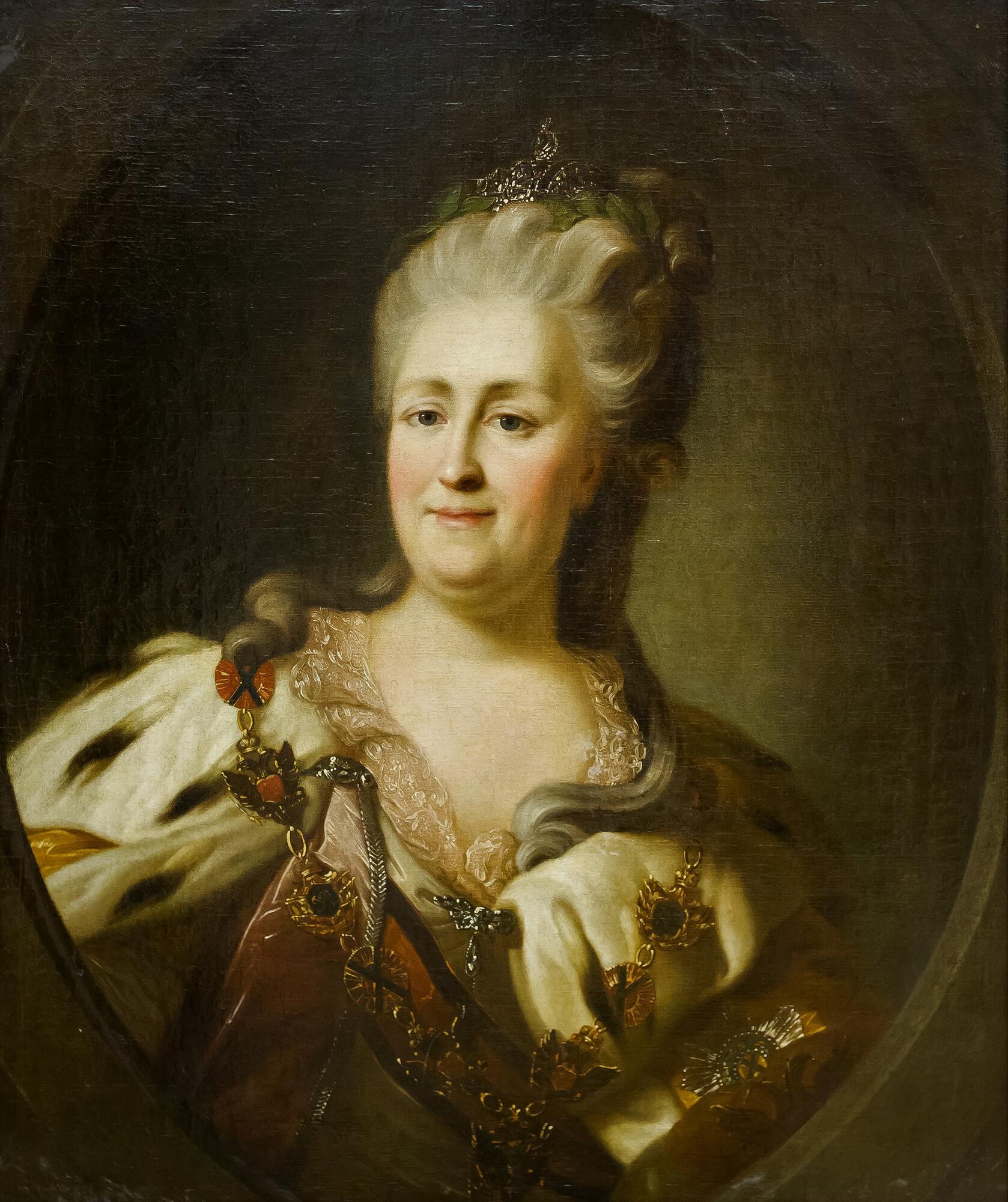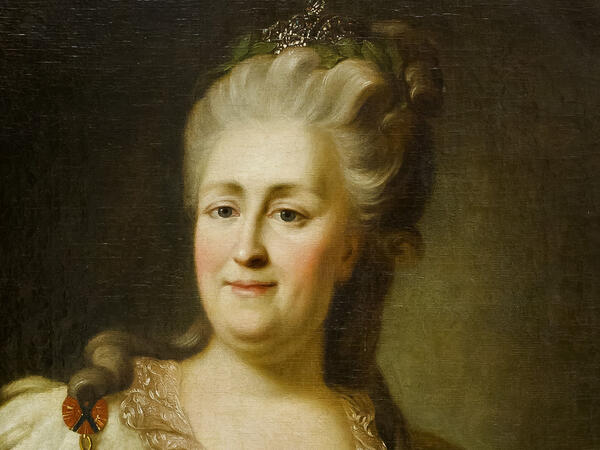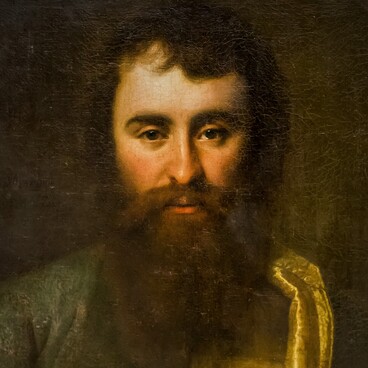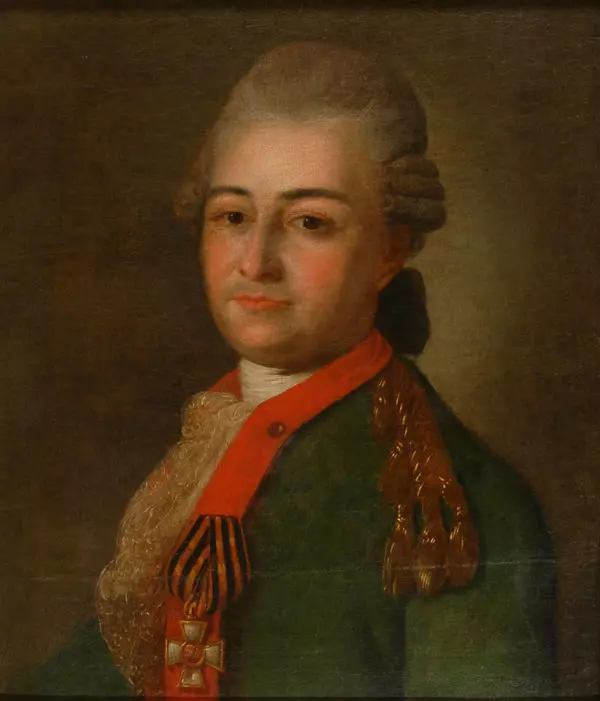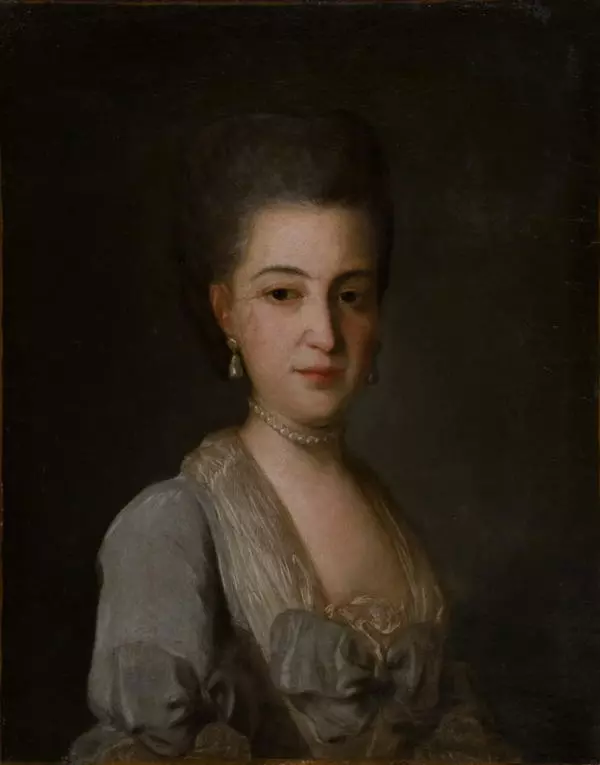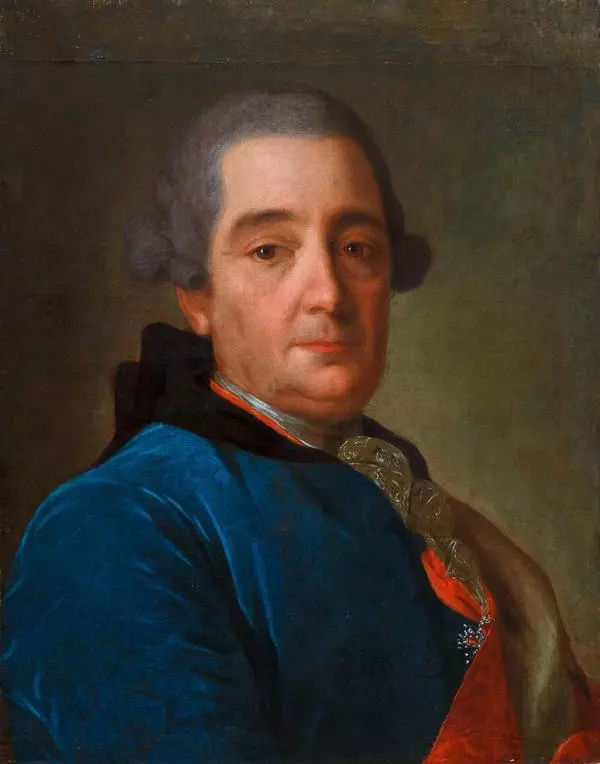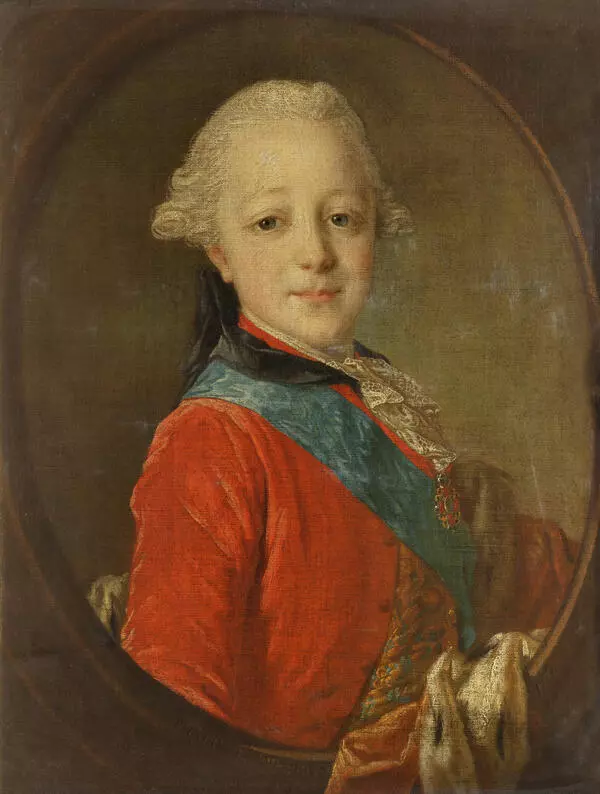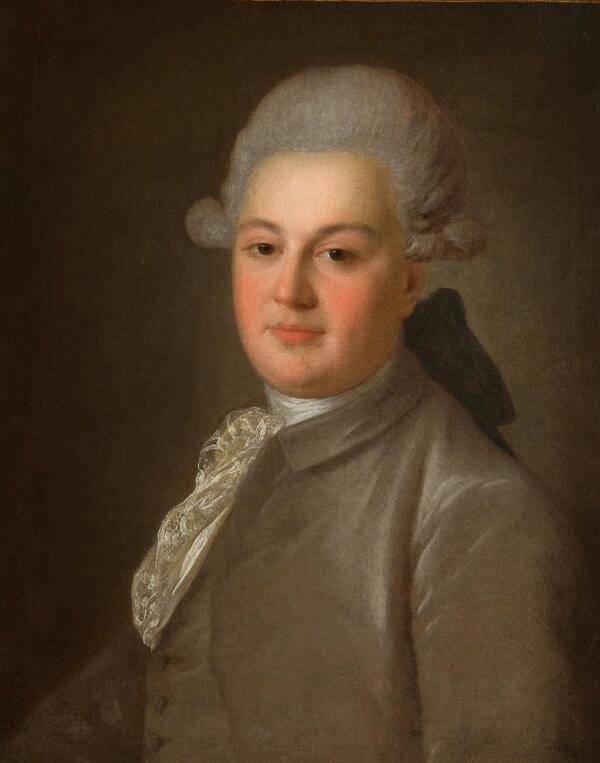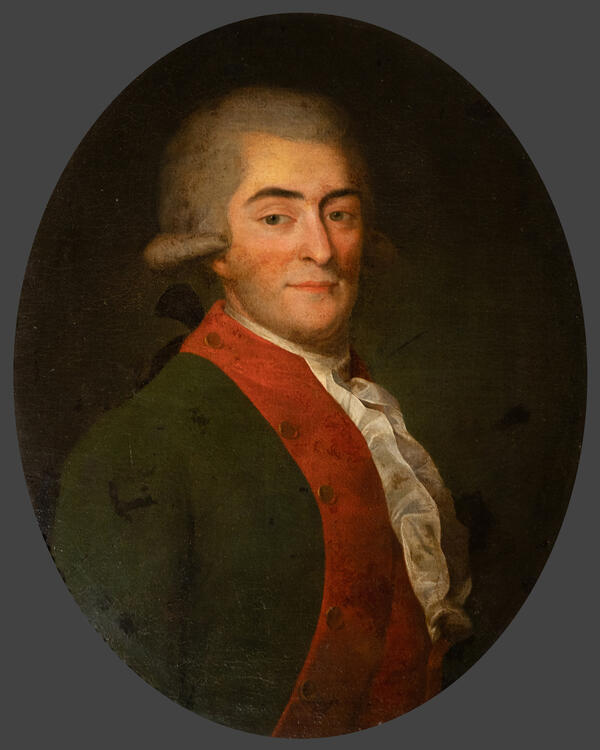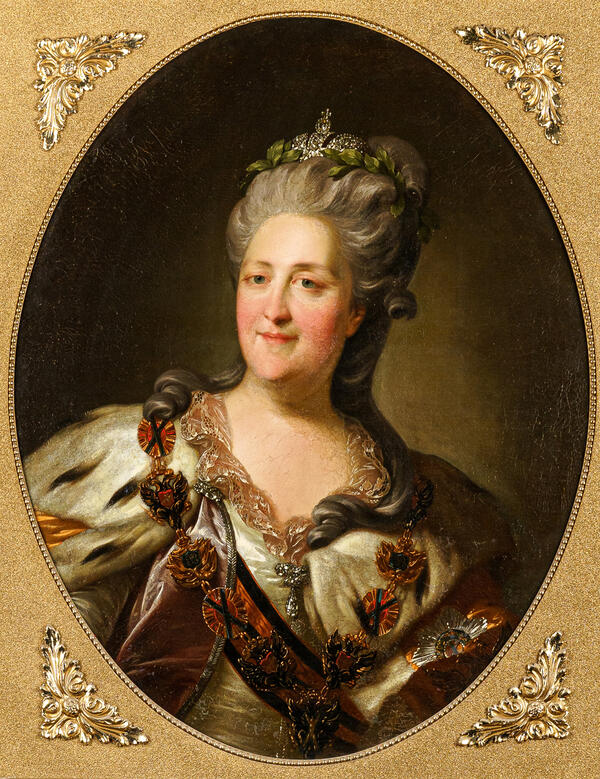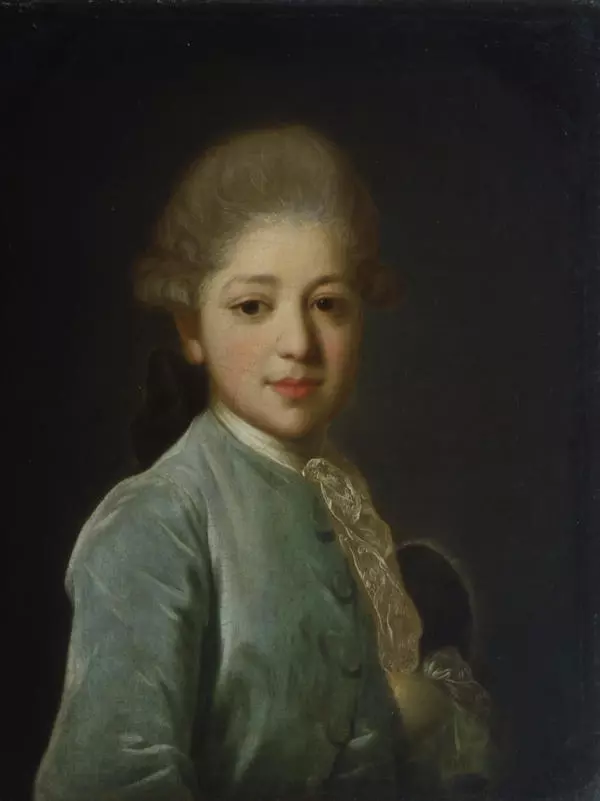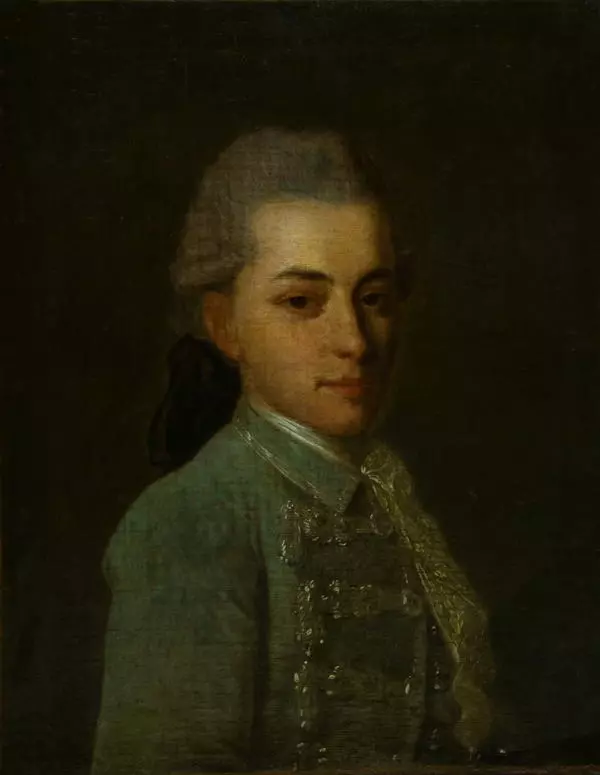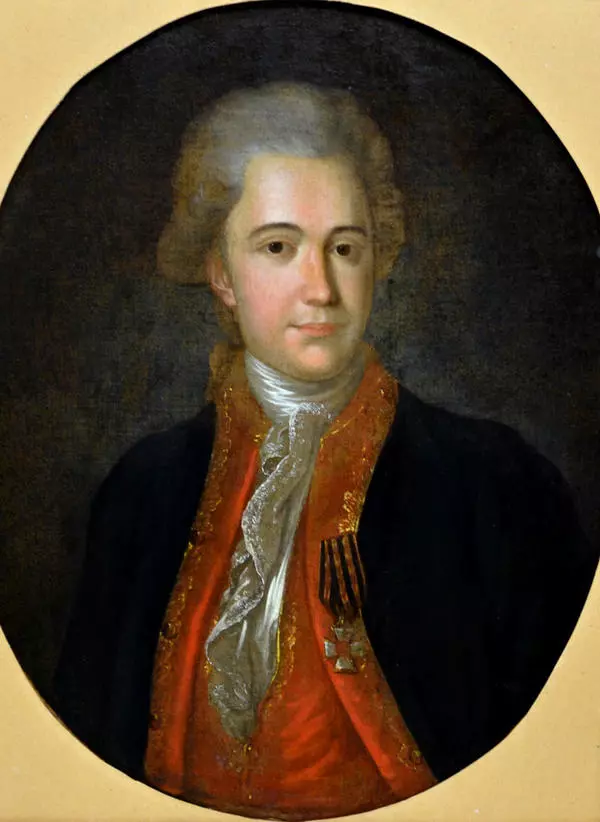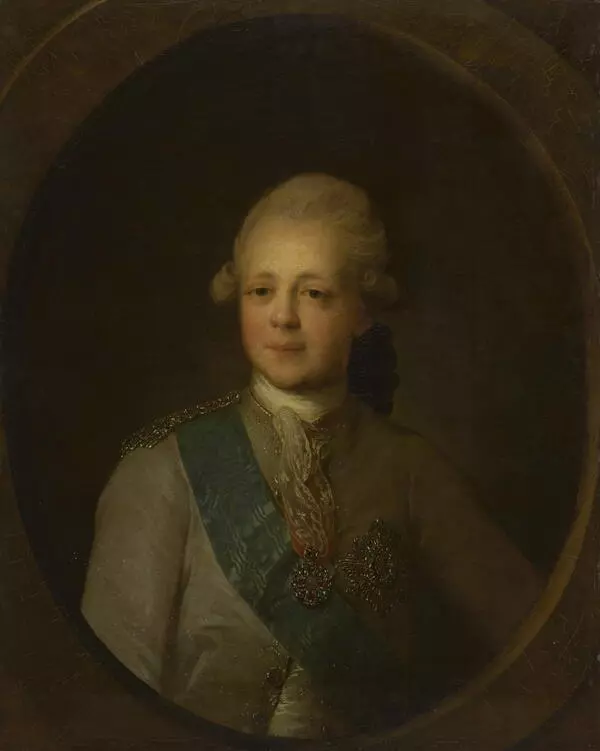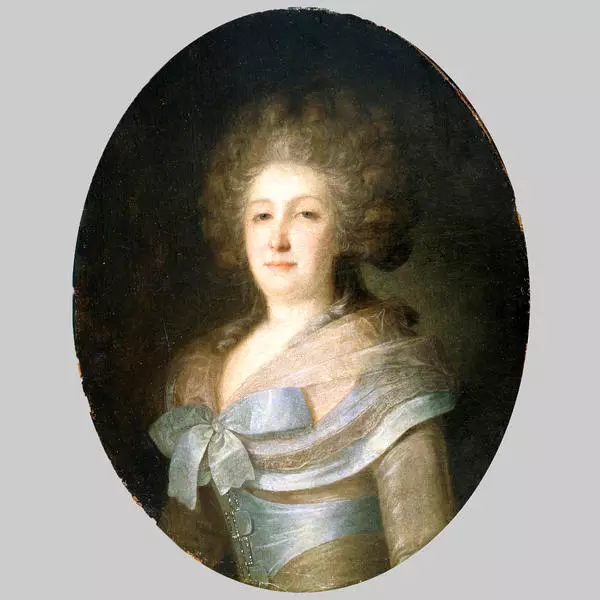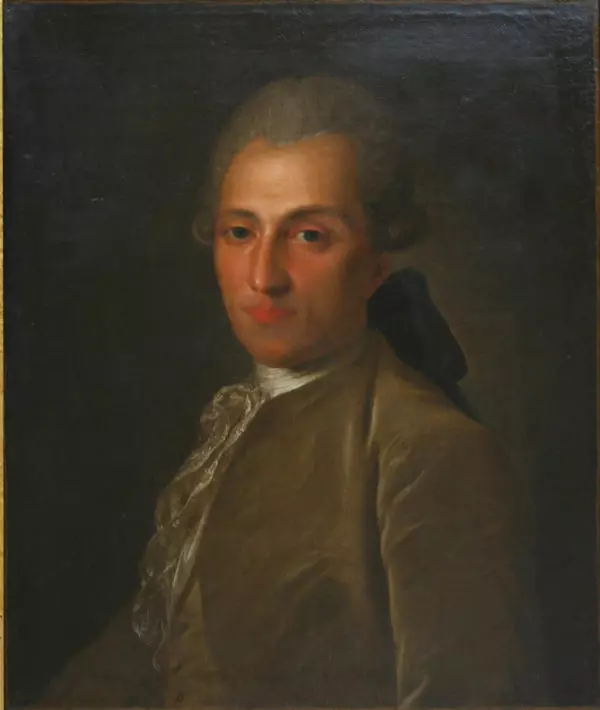‘Portrait of Empress Catherine II’ is a duplicate that Fyodor Rokotov made of his other well-known painting. The original portrait was created around 1769 and used to be housed at the Russian Academy of Sciences, but unfortunately did not survive to the present day. The duplicate in the museum’s collection is dated 1779.
Rokotov portrayed Catherine II with all necessary status attributes, as well as jewelry and orders. This decision was dictated by the reason why the portrait was commissioned. In 1769, the Empress established the Order of the Holy Great Martyr and Victorious George. Due to her royal status, she immediately became a Full Dame of the Order of St. George. On this occasion, she commissioned a portrait of herself with the St. George ribbon. Rokotov did a wonderful job, and the painting would later be set as an example for other artists. This type of portrait traditionally depicted the Empress up from the waist wearing the royal mantle. In addition to the St. George ribbon, the chain and the star of the Order of the Holy Apostle Andrew the First-Called can be seen on her clothes.
The composition looks balanced, which distinguishes the painting from the works of the then-popular Rococo movement. The Rococo is distinct for its breezy elegance with figures often being shifted to the side.
The artist softened the contours of the Empress’ face. The image is slightly blurred which gives Catherine’s features a natural “unfrozen” look. Fyodor Rokotov often painted his models as if they were surrounded by a light haze. This technique is called “sfumato”, and it helps the artist to give the women in his portraits a lively and at the same time soft and very gentle look.
Fyodor Rokotov started taking a lot of commissions right from a young age. By 1764, his workshop already housed dozens of portraits, in which “only heads were completed”. It is likely that the students Rokotov taught at the Academy were helping him — apparently, he assigned them the task of painting details that were of no special importance, such as the background or folds on clothes.
Over time, Rokotov became one of the most sought-after portraitists of the Russian Empire. He portrayed the Saint Petersburg elite of the 18th century and, above all, had a chance to depict the Empress herself more than once. Since not everyone could portray Catherine II first-hand, a lot of artists simply copied the works of those lucky ones who were honored to paint her from life. Rokotov’s portraits were judged to be a perfect example, and so they were duplicated numerous times. The portrait of the Empress in profile was the most popular one and was named ‘the Rokotov’s type’. The portrait from the museum’s collection is also considered one of the recognized types.
The painting used to belong to Pyotr Romanov — the director of Chancellery under the Ministry of Finance of the Russian Empire.
Rokotov portrayed Catherine II with all necessary status attributes, as well as jewelry and orders. This decision was dictated by the reason why the portrait was commissioned. In 1769, the Empress established the Order of the Holy Great Martyr and Victorious George. Due to her royal status, she immediately became a Full Dame of the Order of St. George. On this occasion, she commissioned a portrait of herself with the St. George ribbon. Rokotov did a wonderful job, and the painting would later be set as an example for other artists. This type of portrait traditionally depicted the Empress up from the waist wearing the royal mantle. In addition to the St. George ribbon, the chain and the star of the Order of the Holy Apostle Andrew the First-Called can be seen on her clothes.
The composition looks balanced, which distinguishes the painting from the works of the then-popular Rococo movement. The Rococo is distinct for its breezy elegance with figures often being shifted to the side.
The artist softened the contours of the Empress’ face. The image is slightly blurred which gives Catherine’s features a natural “unfrozen” look. Fyodor Rokotov often painted his models as if they were surrounded by a light haze. This technique is called “sfumato”, and it helps the artist to give the women in his portraits a lively and at the same time soft and very gentle look.
Fyodor Rokotov started taking a lot of commissions right from a young age. By 1764, his workshop already housed dozens of portraits, in which “only heads were completed”. It is likely that the students Rokotov taught at the Academy were helping him — apparently, he assigned them the task of painting details that were of no special importance, such as the background or folds on clothes.
Over time, Rokotov became one of the most sought-after portraitists of the Russian Empire. He portrayed the Saint Petersburg elite of the 18th century and, above all, had a chance to depict the Empress herself more than once. Since not everyone could portray Catherine II first-hand, a lot of artists simply copied the works of those lucky ones who were honored to paint her from life. Rokotov’s portraits were judged to be a perfect example, and so they were duplicated numerous times. The portrait of the Empress in profile was the most popular one and was named ‘the Rokotov’s type’. The portrait from the museum’s collection is also considered one of the recognized types.
The painting used to belong to Pyotr Romanov — the director of Chancellery under the Ministry of Finance of the Russian Empire.
